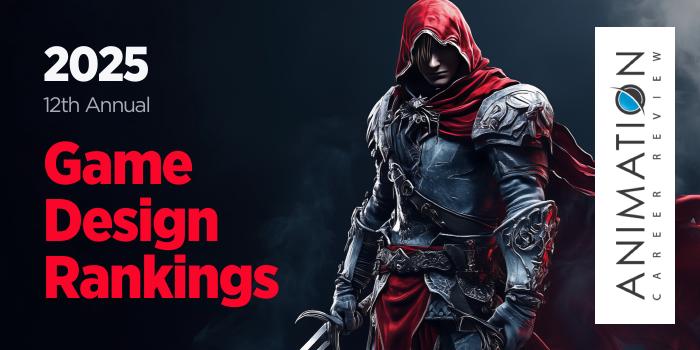Fairleigh Dickinson University (FDU) has several paths to study game design. Maxwell Becton College of Arts and Sciences, houses the School of Art, home to the Film and Animation BA with a Video Game Animation concentration, and a 15 credit hour 3D Video Game Animation minor. At the graduate level, the school provides Animation MA and MFA programs with a Video Games concentration.
Also housed in the Maxwell Becton College is the School of the Sciences, Mathematics, and Computer Science (SMCS), home to the Department of Mathematics and Computer Science. Within the school is a Computer Science BS with a Game Development concentration.
Lastly, FDU’s Gildart Haase School of Computer Sciences and Engineering houses an undergraduate Game Development certificate. This 18 credit hour program requires Computer Programming I-II and Computer Game Programming. For the remaining credits, students may choose from electives such as 3D Multimedia; Human Computer Interface; 3D Visualization; and Multimedia on the Internet.
The hands-on Film and Animation BA allows students to switch concentrations while working their way through the curriculum or double concentrate by choosing two options from 3D Animation, 2D Animation, and Video Game Animation. Students can also work across all areas through anywhere from 12-18 elective credit hours, depending on the concentration.
The Video Game Animation concentration is the ideal choice for game designers as highlights 30 credit hours in theory and production courses, plus 15-18 elective credit hours. Examples of required courses include Game Design; Low Poly 3D Modeling; 3D Game Creation Using Unreal; Character Animation Using CAT; 3D Game Creation Using Unity; ZBrush Digital Sculpting; and 3D Environment Modeling. The program culminates with the Thesis I-II courses.
The 3D Video Game Animation minor at FDU is a 15 credit hour program that focuses on 3D graphics and animation for first-person and third-person games. Required courses include Creative Imagery with Photoshop; Low Poly 3D Modeling; and 3D Computer Animation. For the remaining credits, students will select from the following electives: Game Creation using Unity, Game Design, and Game Creation using Unreal.
The Animation MA and MFA programs with a concentration in Video Games allow students to attend classes on campus, online, or a combination of the two. MA students will complete required courses totaling 18 credits and 18 in major electives. The MFA consists of required courses totaling 36 credits and 24 in major electives. While the MFA requires the Animation and Career Preparation (ANIM 7900) course, MA students can take it as an elective.
Students in both programs will take Character Design; Game Creation; Digital 2D Animation; 3D Animation for Games; Digital Sculpting; and Advanced Game Creation. MFA students will also take Virtual Reality and Video Game Team Project. For MA students, both courses can be taken as electives. Students in both programs have access to electives such as Animation with Houdini; Character Animation – Emotion and Personality; History of Video Games; Expressions and Scripting in After Effects; 3D Character Modeling; and Animation with Hair/Fur.
The FDU Animation MA culminates with a final project, while the Animation MFA culminates with a thesis completed across three courses and presented at the Thesis Event.
The Computer Science BS at Fairleigh Dickinson University is a flexible program that focuses on problem solving, teamwork and collaboration, software design, and professional development. Designed based on guidelines from the International Game Developers Association (IGDA), the Game Development concentration consists of four required courses and two electives selected from a list of seven options.
Required courses include Introduction to Game Development; Human Computer Interaction; Advanced Game Development; and Artificial Intelligence. Elective options include Game Creation Using Unity; Environment Modeling; Game Creation Using Unreal; 3D Computer Animation; Game Design; ZBrush Digital Sculpting; and 3D Asset Creation Video Games. The program culminates with the Senior Project I-II courses or the Computer Science Internship, student’s choice.
Across all Animation, Games, and CS programs, students may participate in the school’s internship program, which provides opportunities to work at major studios and networks such as DreamWorks, Nickelodeon, NBCUniversal, MTV, Viacom, and ABC. Graduates are often hired by many of these studios and networks.
Program alumni have also been hired at places such as Marvel Comics, Sony Pictures Imageworks, Verizon, Tribe Pictures, Pixel Light Digital Media, Whisper Films, Skyline Entertainment, and High 5 Games.
Established in 1942, Fairleigh Dickinson University was the first comprehensive university in the world to require distance learning of its undergraduates. Serving more than 12,000 students across four campuses, FDU is also the largest private university in New Jersey. More than 100 degrees and disciplines are provided across two nine colleges and schools.
In addition to the New Jersey campuses (Madison and Teaneck), the England campus, and the campus in Vancouver, British Columbia, Canada, FDU has extension sites across the state of New Jersey. Fairleigh Dickinson University is accredited by the Middle States Commission on Higher Education (MSCHE).







